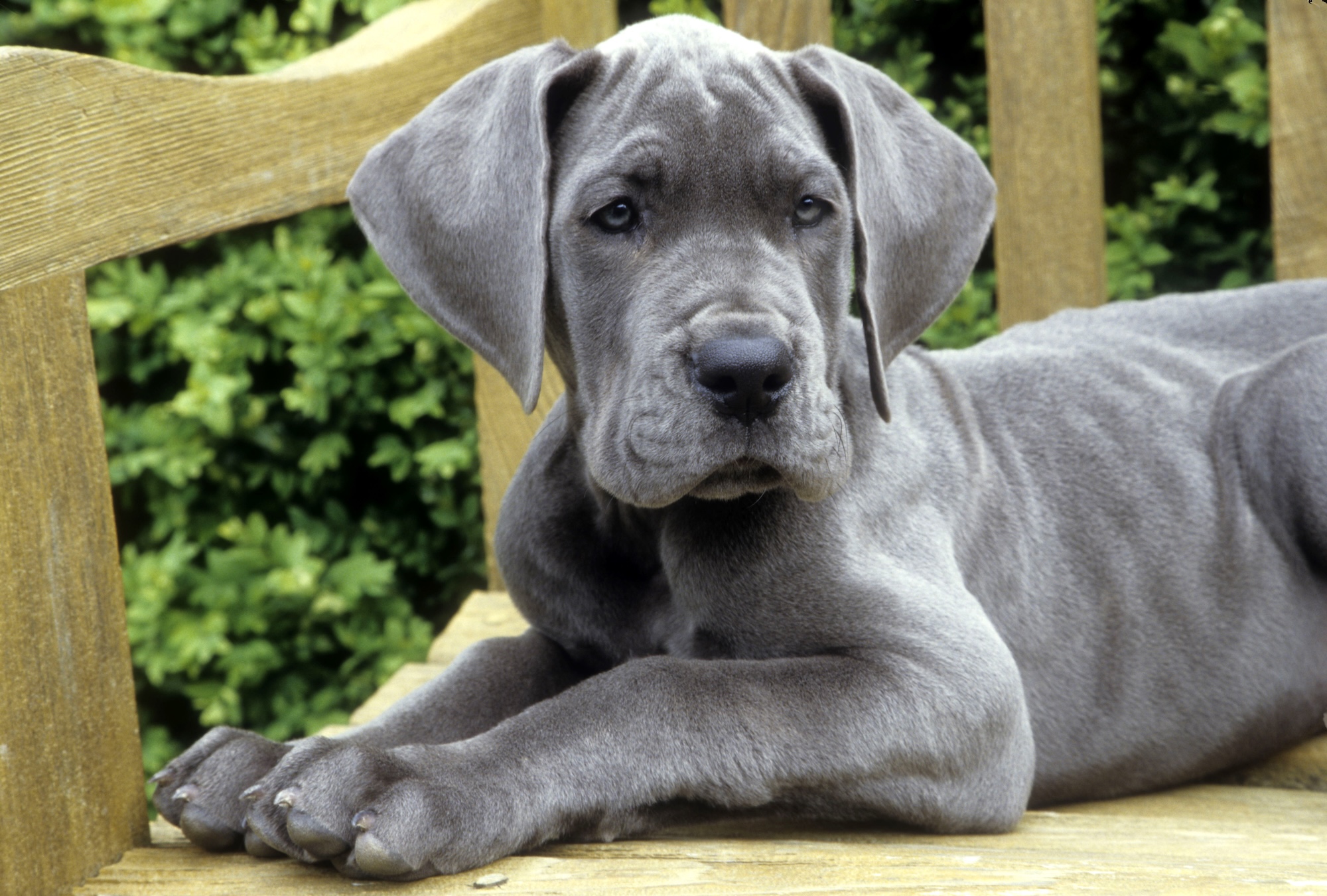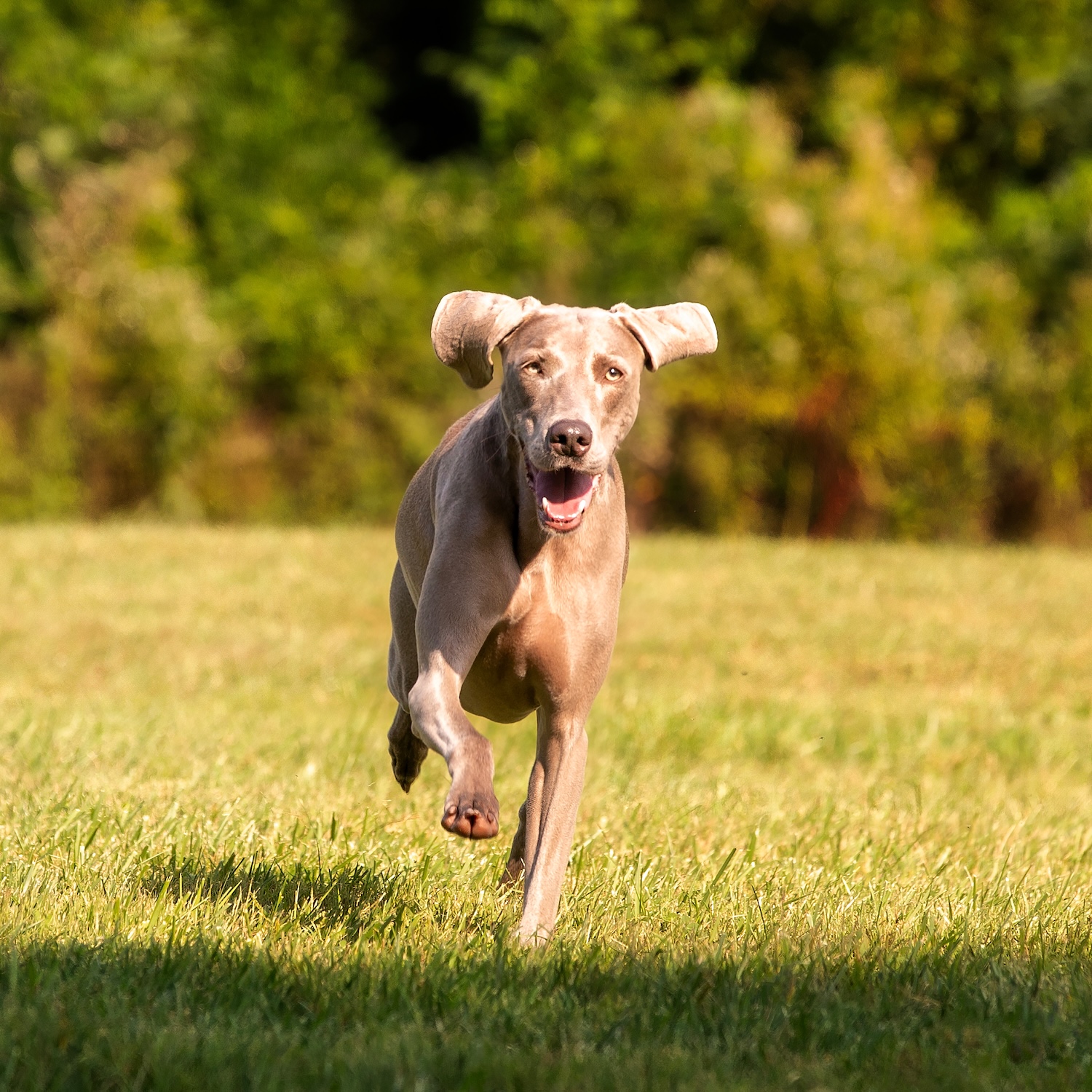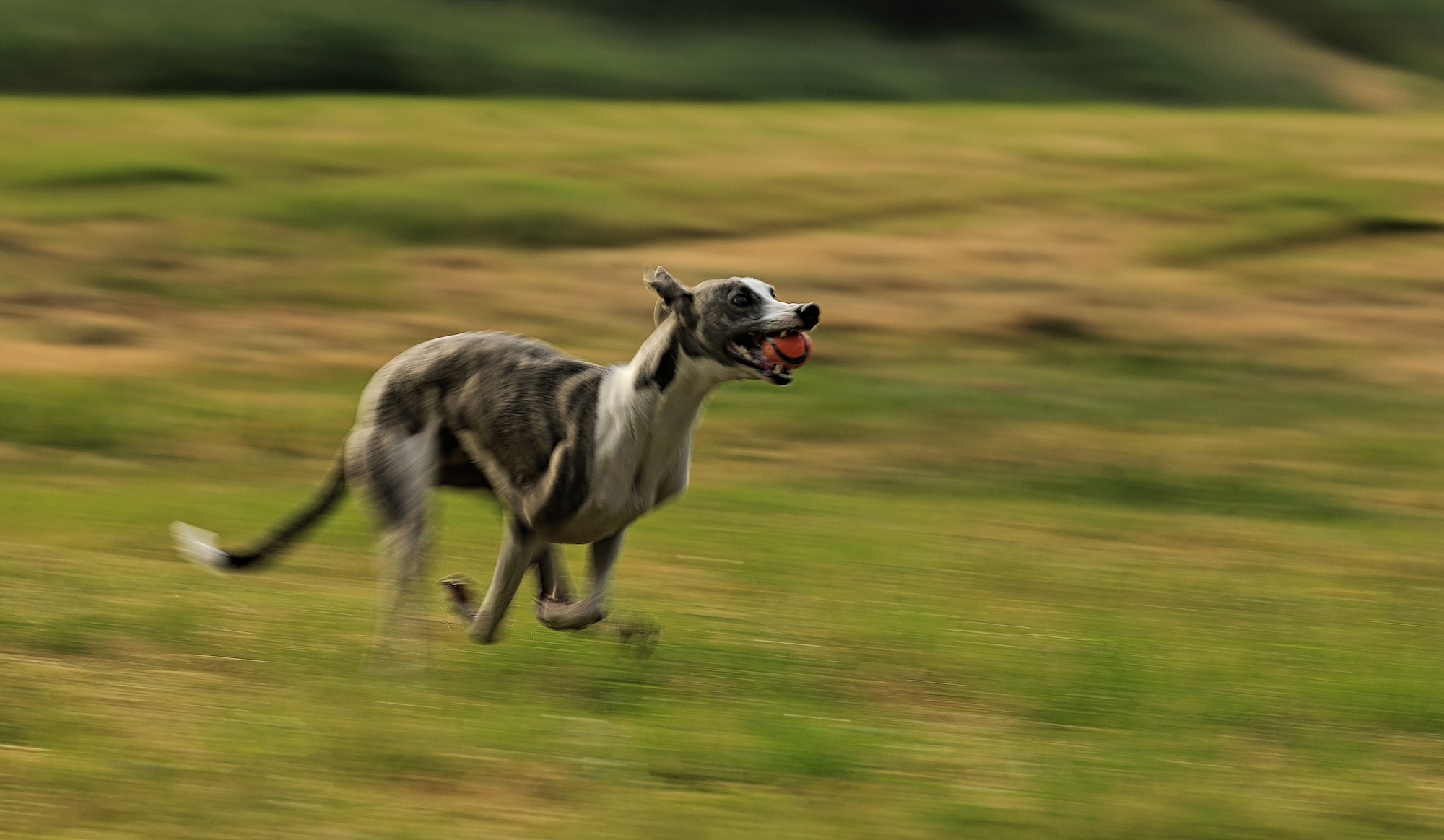If you look at the first, second, or third top places on dog breed popularity lists over the last 35 years, you’ll see one kind of dog rearing their irresistible heads: Labrador retrievers. They’re popular not just in the U.S., but worldwide, and there’s little mystery as to why. Often friendly, fun-loving, and eager to learn, Labs are both beloved family dogs and capable workers, occupying roles as hunting dogs, service dogs, and search-and-rescue dogs. Their popularity proves that once these versatile pups are in your heart, they stay there.
Labs, whether they have yellow, chocolate, or black coats, will make friends with the whole family (and, typically, just about everyone else they meet), but their affability and good nature shouldn’t be confused with “low-maintenance.” These dogs tend to be energetic and intelligent, and they need plenty of high-quality exercise and enrichment throughout the day.
Below, find the basics about Labs and their mixes, including what owners, rescues, and experts have to say about raising and living well with these happy-go-lucky dogs.
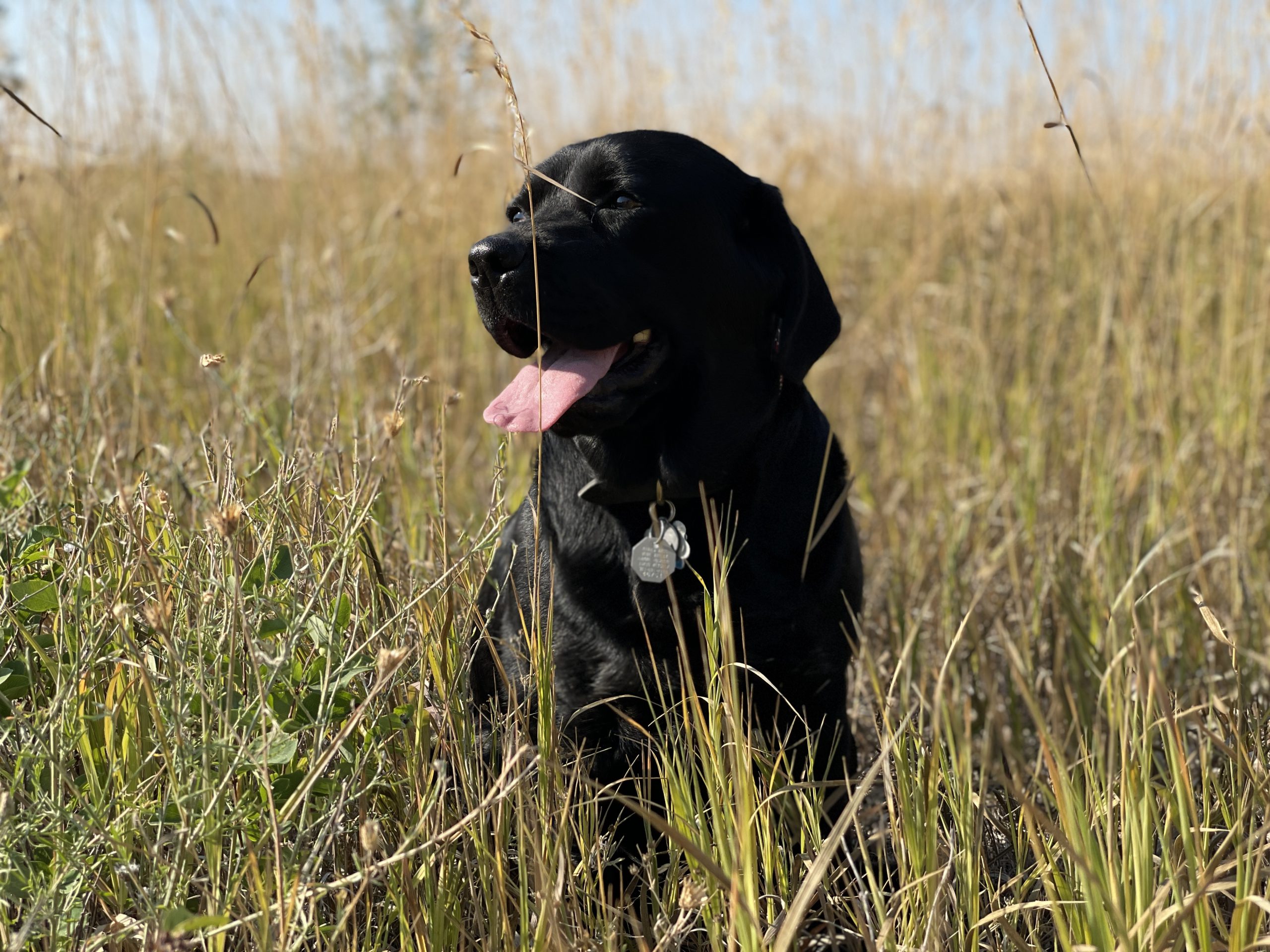
History of Labs
Labrador retrievers are descendants of small water dogs called St. John’s dogs that lived in colonial Canada, themselves a mix of dogs imported by colonists from various European countries. The early Labs were bred as retrievers for fishermen, and they worked on the island of Newfoundland, rather than mainland Labrador. The Newfoundland dog—their much larger, shaggier, webbed-footed colleagues on the fishing vessels—eventually took the name of the island.
Labradors did not simply head south to the United States, where they became beloved companion dogs. These St. John’s Dogs also traveled along trade routes from Canada to England in the early 1800s. There, they captured the attention of various nobility who were impressed with their abilities as retrievers and their fearlessness around water, especially near-freezing water. They rightly deduced that these dogs would make great gun dogs and waterfowl hunters, and began breeding programs on their estates.
How the dog was misnamed “Labrador” (rather than “Newfoundland,” where they originated) is a mystery, but the credit often goes to the son of the second Earl of Malmesbury, who was one of the first to purchase the dogs from Canadian traders and breed them. In the 1880s, the third Earl of Malmesbury is said to have, along with the Duke of Buccleuch in Scotland, kept the breed alive and molded them into the dogs we recognize today (they had black coats at the time, but eventually chocolate and yellow were bred in). In a letter written from the Earl to the Duke in 1887, he wrote, “We always call mine Labrador dogs” and that the “breed may be known by its close coat, which turns water off like oil and, above all, a tail like an otter.”
Labs took some time to become popular in the U.S., not breaking into the American Kennel Club’s top ten rankings of registered breeds until the 1970s. Once there, though, they never left. From 1991, they were the favorite breed in the country for 31 years, only displaced by the French bulldog in 2022.
Basic Labrador retriever breed facts
Labrador retrievers have dense, water-repellent double coats that come in different colors—usually white, yellow, chocolate, or black. These dogs are well-equipped for swimming, and many of them can’t get enough of the water, whether they have access to a lake, river, ocean, pool, or bucket.
Laura, owner of 6-year-old Jax, says that her pup has the breed’s classic love for all things aquatic. “Jax loves water, except bath time, of course,” she says. “Watering the flowers? Nope. You’re watering Jax because he stands in the flowers you’re attempting to water. If there’s a stream on that hike, we’re getting wet. Umbrella? Nah-uh. He walks in the rain, tail wagging. My neighbors laugh at me because Jax has his own kiddie pool. Not even the water bowl is safe. I had to get raised ceramic bowls he couldn’t knock over.”
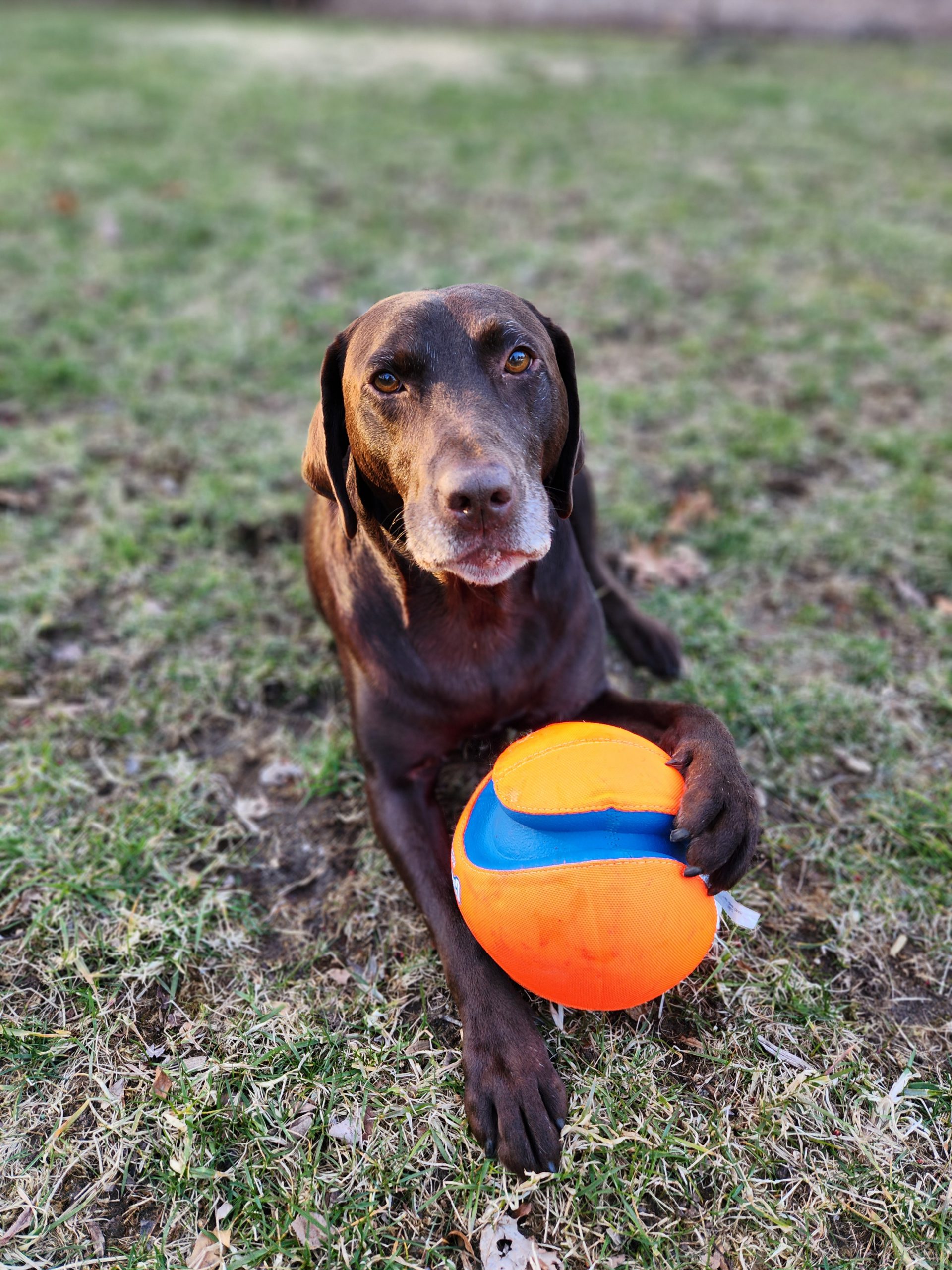
In addition to their distinctive coats, they’re recognizable by their sweet, broad faces and short, floppy ears. American Labs grow to be around 55 to 80 pounds, and 21.5 to 24.5 inches tall at the shoulder. Their “otter” tail, as the third Earl of Malmesbury put it, often wags enthusiastically (be careful with glassware on low tables around Labs).
English and American Labs are similar, but English Labs tend to have blockier heads and denser, broader, shorter builds. They’re considered more of a working dog compared to the companionable American dog, though both American and English Labs’ capabilities can vary depending on their early experiences and how they’re trained.
Thanks to their double coat of dense hair, Labs are big shedders. Weekly brushing—and daily brushing during their two heavier shed periods—can help contain the amount of hair on furniture and clothes. Those who love Labs, however, tend to learn how to make peace with the amount of dog hair in the home.
“Don’t believe anyone who tells you they don’t shed much,” says Paul, owner of 3-year-old Raihan, “Invest in several decent vacuum cleaners.”
Leslie Solomon, who interviews potential adopters for the New York State Retriever Rescue, and has fostered and adopted Labs herself, has an additional grooming note for potential adopters with backyard pools, which she’s learned from experience: “If you have a white lab or cream-colored lab and you have a pool with chlorine, you better get the chlorine-removing clarifying shampoo. They could turn green.” (Make sure that any shampoo is formulated for dogs and approved by vets).
Typical lab personality profile
Labs are often described as “easygoing” and good family dogs. These rumors are generally true. They tend to be open and sweet toward people, including brand new acquaintances.
“Having a lab (or many) has filled our lives with so many joys, and ironically they have all been so very different (just like children),” says Moxie’s owner Jamie Olsen. “She is very independent, protective, playful, LOVES the water, and above all loyal and loving. She is always ready to play (even at almost 7 years old) and, like all our Labs, at the door ready to greet you with a wagging tail and smother you with love when you return from your day. It has also brought us so much joy to watch her interact with our grandbabies. She is our gentle giant.”

Even the gentlest giant should be supervised around children, and kids should be taught how to approach and play with a dog, as well as recognize its body language or signals. Sometimes, Labs are considered too high-energy for toddlers when they’re young, and sometimes kids are too active for them when the dogs are older.
“The majority of the dogs are great with kids and in a family environment,” Sarah Sidelinger, longtime volunteer at the Georgia-based Labrador Friends of the South. “We have gotten some that [are] a little older, and they just don’t want to be climbed all over and grabbed at, so they’re not really keen on kids. We have some that are 120 pounds and bouncing off walls, so even though they have kind souls, we don’t think they’d physically do well with young kids.”
Remember that though it’s typical for Labrador retrievers to be warm and friendly, personality can vary from dog to dog based on their past experiences. Every dog is its own dog. For example, Meilyng, owner of Cody, says that adopting a lab in its middle-age did not guarantee a laid-back companion.
“We rescued Cody when he was 6-ish and have had him for almost two years,” Meilyng says. “We envisioned a less energetic pup based on age, but we were so wrong in the best way possible. He’s super energetic and expressive, and we love him for that. With how much grey his face has, he must also be hiding energy drinks somewhere around the house!”
It’s important to remember, too, that their easygoing nature doesn’t cancel out their intelligence and high-energy output. They’re active dogs who require significant exercise and enrichment.
Craig and Sherry Bell say of their “spirited chocolate Lab” Cody Sebastian, “He’s got more energy than a toddler on a sugar rush. Zoomies are a daily event, and fetch? Don’t even get us started! Cody treats our living room like his personal racetrack, but honestly, we wouldn’t have it any other way!”

Healthy lifestyle for Labrador retrievers: training and exercise
Loki, a nearly year old black Lab, “is the quintessential Labrador retriever” says Mark Felton, his owner. “He’s a very happy, energetic dog that always wants to be around you. He is always ready for an adventure, loves people and other dogs and is very trainable. We were able to fully potty train him in two weeks. He’s sweet, playful and always wants to be around you. He’s a ball of energy.”
Indeed, if these pups don’t get the exercise to expel all that joyful energy, they could learn to use that energy in destructive ways.
Maureen Chmielecki, who lives with 5-year-old Bailey, says that while all puppies have high energy, “Bailey was, and still is, in a class of his own. His energy level is off the charts. I was soon to learn that Bailey thought everything was one of his toys: cell phones, remote controls, rolls of paper towels, etc. Bailey soon taught us what we needed to keep out of his reach.”
“If I fall asleep on the couch, I will wake up to tennis balls lining my body,” says Kate, owner of 8-year-old lab Ammo. “When he was a puppy I wish I had known just how [much] energy they have. He needed to play or stay busy all the time or else he was chewing up anything he could find, including but not limited to vacuum cords, all phone charger cords, etc.”
Solomon of the NYSRR says that she tells those she interviews for adoption that “they need not just exercise, they need those daily walks multiple times a day. I have spoken to far too many adoptive applicants who think that just letting the dog out in the backyard is sufficient. It’s not.”
Labs tend to take well to training, in part because of their athleticism and intelligence, and in part because they generally sustain a high level of food motivation. These dogs are often recruited as puppies to train as service, search and rescue, and hunting dogs.
Lynn Shira’s 6-year-old Lab, Sony, was discharged from America’s VetDogs due to allergies, but now does therapy work at an assisted living facility. Shira says, “We learned quickly that Labs are food driven and because of that, are motivated to learn when treats are involved!”
Even if they’re not destined to join the workforce, training Labs early and often is important for a handful of reasons. No matter what kind of dog you have, consistent training is good for communication and for enrichment, and it can strengthen your bond. Labs especially are smart, energetic, and like to please, so care should be put into training every day.
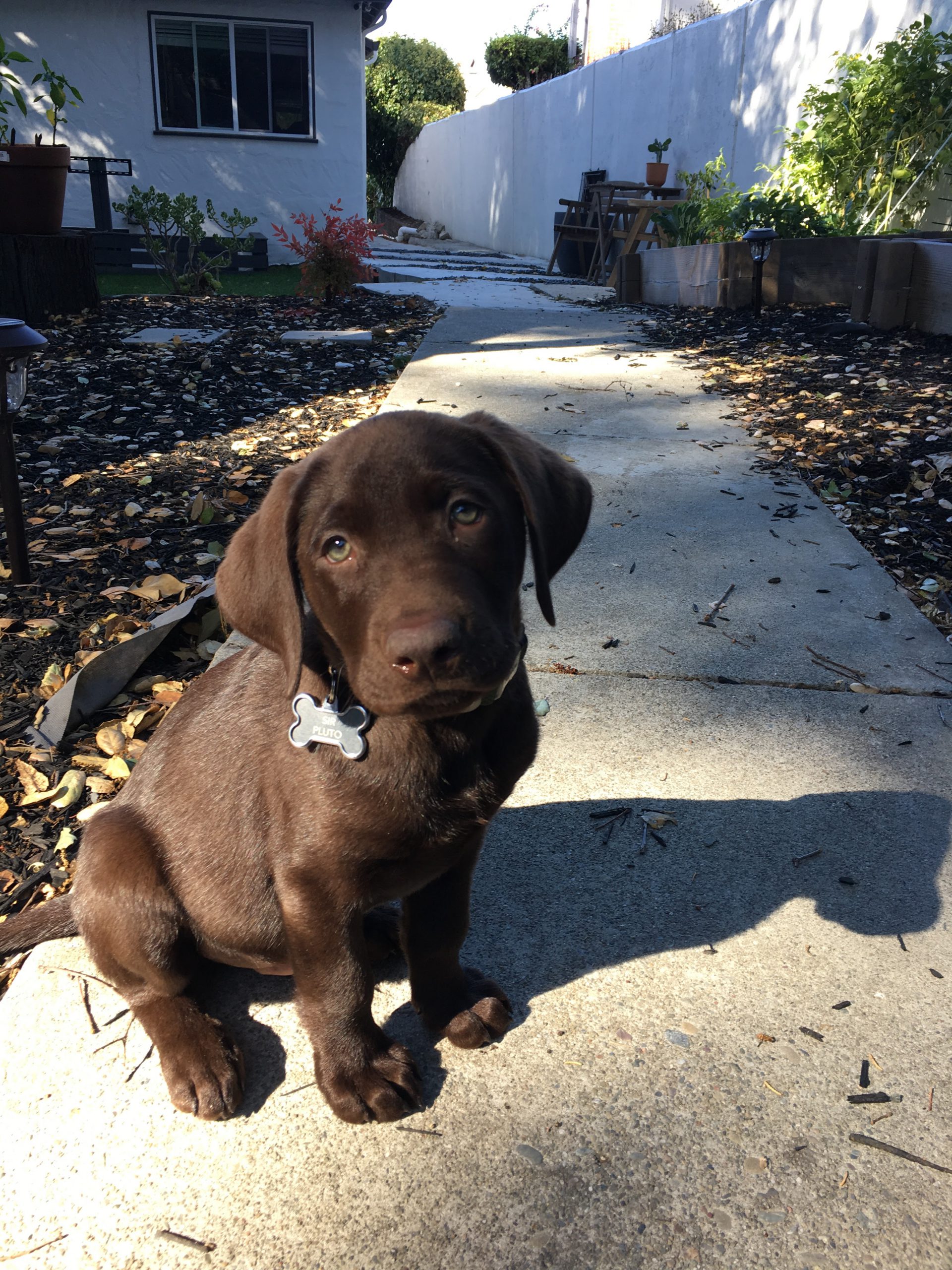
“Labs thrive in an environment where they’re both physically and mentally challenged no matter whether the dog is ‘lazy’ or not,” Sidelinger says. “Constant and consistent training does well. It puts you in that leadership role as an owner and it mentally stimulates the dog. Labs are one of the smartest breeds, so if you’re going to lock one of the smartest breeds in a crate all day all it’s going to do is think about how to get out and be destructive.”
Leaving any dog alone for too long, too often can cause separation anxiety. Labs need stimulation and generally enjoy being around people, so in addition to giving them enough exercise and enrichment daily, build up their tolerance to being alone slowly. Read more on how to prevent and manage separation anxiety here.
It’s essential to understand how much time you have day-to-day to commit to your Labrador retriever before bringing one home. Take a moment to consider how much time you’ll have for both training and walking, plus time simply spent in each other’s company. If you want an active, family-oriented companion, these are the dogs for you. But if you’re traveling frequently or work long hours out of the home (and can’t or don’t want to provide a walker or daycare for your dog), they’re probably not the best choice. Have a good grasp on these lifestyle questions before moving forward with adoption. Understand, too, that puppies will take significantly more time and attention. If you have less time to give, as Sidelinger notes above, fostering or adopting an older Lab could be the right choice for you and your family.
Breed-specific health concerns
Obesity: Labs are famously food-focused and prone to overeating. A significant portion of them carry a gene mutation that causes an increased interest in food and a decrease in calories burned through activity. Since obesity can contribute to the development of serious health outcomes, from high blood pressure to cancer, it’s important to regulate how many calories they get in a day. Pre-portioned meals from The Farmer’s Dog can keep a Lab’s weight in check, since the portions are designed specifically for each dog’s needs.
Hip and elbow dysplasia: Dysplasia is a common skeletal disorder, especially in large dogs. “Dysplasia” means “abnormal growth or development,” and it describes a condition where the joint no longer fits its socket well due to improper growth. It usually develops over time, and dogs with hip or elbow dysplasia may move slower than they used to, have trouble getting up from a lying down position, and/or avoid stairs. Carrying extra weight can be hard on joints, so keeping these dogs at a healthy weight throughout their life is crucial.

Arthritis: Labs’ joint problems can develop into osteoarthritis, a degenerative disease that causes inflammation and pain in the joints, making it difficult for the dogs who have it to walk, run, get up, or lie down. Again, prevention is often the first line of defense against the disease, and serving healthy, correctly proportioned food, so they can’t overeat helps (be careful with over-treating as well). One lifetime study of Labs found that dogs who maintained a lean weight lived an average of two years longer than their overweight counterparts. Importantly, these dogs who maintained a healthy weight delayed the onset of osteoarthritis.
Labs are also predisposed to immune-mediated polyarthritis. This condition, in short, causes lameness, joint pain, and swelling in the joints due to inflammation. It can be triggered by medications, an autoimmune disorder, or, possibly, ticks. A vet can diagnose this condition and determine the best course of action for treatment, which could include NSAIDs, corticosteroids, or immunosuppressive medications.
Moist dermatitis (hot spots): Hot spots are lesions anywhere on the body that are red, inflamed, and potentially oozing pus. Anything that would cause a dog to repetitively scratch or lick could cause hot spots, from allergies to boredom to insect bites to ear infections (more on those below). Bacterial skin infection may also be to blame, as these infections can cause the skin to itch. Sometimes dogs with arthritis get them from lying down too much. Elizabethan collars (a.k.a. the cone of shame) can prevent the dog from licking and scratching so that the hot spot has time to heal. A veterinarian will sometimes prescribe a topical cream for the issue.
Canine otitis externa (ear infections): It’s often assumed that a labrador’s floppy ears are to blame for their predisposition to ear infections, but the American Veterinary Medical Association did not find a correlation between floppy ears and this common condition (Labs may have them at a higher rater, but similarly floppy-eared beagles do not). Their affinity for water could contribute to the issue, so be sure to dry the Labs’ ears after they come out of the water or get wet. Opinion differs on how to treat ear infections and treatment changes depending on the cause of the infection, so consult a vet if a lab gets one, especially if the infections become chronic.
Lipoma: Lipoma are masses of fatty tissue that usually appear under the skin of older dogs. Any dog can get them, but labrador retrievers are prone (one study found that they are 2.5 times more likely to develop them than other breeds). They’re benign tumors and are not harmful generally, though if they are in a place that causes discomfort to your dog, or if they get extremely large, you may consider having them removed.
Food and nutrition for Labs
As we do for every breed guide, we canvassed Labrador retriever owners across the country for their thoughts and experiences on raising these dogs, whether they’re purebred or mixed, and have never received so many enthusiastic responses. Among the most common refrains of Lab owners were how much their dogs ate, their food motivation, and their ability to sniff out snacks wherever they may be hiding. Here are just a sample of some responses:
“Coco is a walking stomach,” Mariana Fernandez says of her 6-year-old Lab, “You feed him, give him a treat, and he is still looking for anything you would share.”
“She also loves food and the people that give it to her,” Dana and Gabrielle Bjornson say of their lab, Nellie. “The salivating is something else.”
“It’s easy to tell Pluto is a Labrador by the way he always finds himself around the dinner table if people are sitting, even if there isn’t food,” Armando says of his lab.
“Thankfully, Emily has been relatively healthy, but one issue we’ve faced is her tendency to gain weight quickly if we’re not careful with her diet,” Mike Moore says of his 3-year-old Lab. “She’s always ready for a snack, so managing portion sizes and keeping her active is key to maintaining her health.”

Recent studies have isolated one potential reason for a Labrador retriever’s commitment to food and propensity for overeating. A report at the University of Cambridge found the POMC mutation in the genes of about 25% of Labs and 66% of flat-coated retriever dogs. This mutation causes an increased interest in food and a decrease in calories burned through activity—that is, those with the gene are both hungry all the time and don’t need as many calories to maintain a healthy body weight. Perhaps unsurprisingly then, a 2021 study at the U.K.’s Royal Veterinary College (RVC) found that they’re 1.6 times more likely to be obese than other dog breeds.
Portioning food correctly is crucial to keeping these dogs in shape, which is important because obesity can lead to serious health conditions, like liver disease, heart failure, chronic kidney disease, and cancer. The Farmer’s Dog pre-portions every meal for each dog’s needs, so it’s simple to feed them exactly what they need—no more, no less. The portions are calibrated to ensure each dog’s nutritional needs are met without overfeeding.
Managing a Lab’s weight is just one way that diet can support their health.
Support joint health: A fresh diet that provides balanced omega-3 fatty acids may help keep joints healthy. A pre-portioned fresh food plan also makes it easy to feed the right number of calories every day. This helps maintain a healthy weight, which is another key factor in keeping joints healthy, as well as improving general health and quality of life.
Healthy teeth: Eating for dental health means eating for overall health–a fresh, whole-food diet promotes a healthy immune system, which helps ward off dental maladies. Crunchy kibble is often said to clean teeth, but most kibble does no such thing.
Limit treats and snacks: Treats and snacks should make up no more than 10% of your dog’s daily calorie intake—and this goes for very active dogs as well. They make great training rewards, but don’t go overboard on the quantity. When you sign up for a fresh-food plat from The Farmer’s Dog you can also add healthy, human-grade treats that are also portioned just for your dog.
A healthy diet is the best way to support your Lab’s health and happiness — along with training, regular vet care, love, and the occasional swim, of course.
If a Labrador retriever sounds like the perfect loyal companion for you, consider adopting from a local Lab rescue or animal shelter (a Lab mix could be the ideal option).



